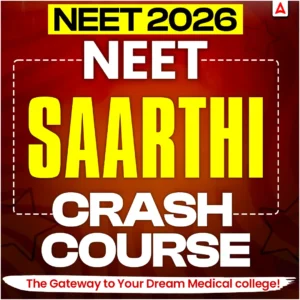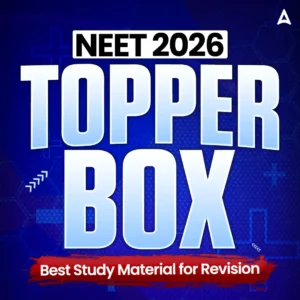The National Medical Commission (NMC) has not yet released the syllabus for NEET-UG 2026. To achieve a strong score, students should start their preparation based on a clear understanding of the syllabus. This article provides the most recent syllabus details for Physics, Chemistry, and Biology to help you plan your studies effectively.
NEET 2026 Syllabus Overview
The NEET 2026 syllabus includes Physics, Chemistry, and Biology. It is based on Class 11 and 12 NCERT books and tests how well students understand the basic concepts.
| Feature |
Information |
| Key Subjects |
Physics, Chemistry, Biology |
| Format |
PDF |
| Applicability |
Mandatory for all NEET 2026 aspirants |
| Availability |
On the official NTA website |
| Conducting Authority |
National Testing Agency (NTA) |
| Expected Release |
December 2025 |
NEET Syllabus 2026
The National Medical Commission (NMC) will officially release the updated NEET UG 2026 syllabus on its website. If you’re preparing for the NEET UG Exam 2026, this is the perfect time to gear up using the latest syllabus. This new syllabus covers all the important topics in Physics, Chemistry, and Biology, so you can focus only on what really matters. No more confusion or wasting time on extra topics!
Make sure to visit the official NMC website to download the full syllabus. Studying with the updated syllabus will help you stay on track, boost your confidence, and improve your chances of cracking NEET 2026. Start early, stay focused, and prepare smart — success is just a step away!
NEET 2026 Syllabus by NTA
The National Eligibility cum Entrance Test (NEET) 2026 will check students’ understanding of core science subjects – Physics, Chemistry, and Biology. The question paper will have a total of 180 questions: 45 from Physics, 45 from Chemistry, and 90 from Biology (which includes both Zoology and Botany).
To do well in the exam, students need to study all the key topics given in the NEET 2026 syllabus. Covering every topic carefully will help them feel confident and prepared to answer any question in the exam. A clear understanding of concepts and regular practice can boost their chances of scoring high. So, all NEET aspirants should focus on completing the syllabus on time and revising it properly for the best results.
NEET Physics Syllabus 2026
The NEET Physics syllabus has been released online by the National Medical Commission at its official website sharing the class-wise syllabus. Students need to note that the NEET Syllabus 2026 for the Physics paper comprises of major topics like Kinematics, Laws of Motion, Thermodynamics, Electrostatics, Electromagnetic Waves, etc. The table below shares the complete list of important topics that students need to study for their NEET Exam 2026.
| NEET Physics Syllabus 2026 |
| Class 11th Topics |
Class 12th Topics |
| Physical World and Measurement |
Electrostatics |
| Kinematics |
Current Electricity |
| Laws of Motion |
Magnetic Effects of Current and Magnetism |
| Work, Energy, and Power |
Electromagnetic Induction and Alternating Currents |
| Rotational Motion |
Electromagnetic Waves |
| Gravitation |
Optics |
| Properties of Solids and Liquids |
Dual Nature of Matter and Radiation |
| Thermodynamics |
Atoms and Nuclei |
| Kinetic Theory of Gases |
Electronic Devices |
| Oscillations and Waves |
Experimental Skills |
Detailed NEET Physics Syllabus
The table below contains the Unit-wise details syllabus for the NEET Physics exam.
| Complete NEET Physics Syllabus |
| Units |
Topics |
| Class 11th |
UNIT I: Physics And Measurement
|
- Units and Measurements, System of Units, S I Units, fundamental and derived units, least count. significant figures, Errors in measurements, and Dimensions of Physics quantities. dimensional analysis, and its applications.
|
| UNIT 2: Kinematics |
- The frame of reference, motion in a straight line. Position- time graph. speed and velocity: Uniform and non-uniform motion. average speed and instantaneous velocity. uniformly accelerated motion. velocity-time, position-time graph, relations for uniformly accelerated motion- Scalars and Vectors. Vector. Addition and subtraction, scalar and vector products. Unit Vector. Resolution of a Vector. Relative Velocity. Motion in a plane, Projectile Motion. Uniform Circular Motion.
|
| UNIT 3: Laws Of Motion |
- Force and inertia, Newton’s First Law of motion: Momentum, Newton’s Second Law of motion, Impulses: Newton’s Third Law of motion. I-aw of conservation of linear momentum and its applications. Equilibrium of concurrent forces.
- Static and Kinetic friction, laws of friction. rolling friction.
- Dynamics of uniform circular motion: centripetal force and its applications: a vehicle on a level
circular road. vehicle on a banked road.
|
| UNIT 4: Work, Energy, and Power |
- Work done by a constant force and a variable force; kinetic and potential energies. work-energy theorem, power.
- The potential energy of spring conservation of mechanical energy. conservative and nonconservative forces; motion in a vertical circle: Elastic and inelastic collisions in one and two dimensions.
|
| UNIT 5: Rotational Motion |
- Center of the mass of a two-particle system, Centre of the mass of a rigid body: Basic concepts of rotational motion; moment of a force; torque, angular momentum, conservation of angular momentum and its applications;
- The moment of inertia, the radius of gyration, values of moments of inertia for simple geometrical objects, parallel and perpendicular axes theorems. and their applications. Equilibrium of rigid bodies. rigid body rotation and equations of rotational motion, comparison of linear and rotational motions.
|
| UNIT 6: Gravitation |
- The universal law of gravitation. Acceleration due to gravity and its variation with altitude and depth. Kepler’s law of planetary motion. Gravitational potential energy; gravitational potential. Escape velocity, Motion of a satellite, orbital velocity, time period, and energy of satellite.
|
| UNIT 7: Properties of Solids and Liquids |
- Elastic behavior, Stress-strain relationship, Hooke’s Law. Young’s modulus, bulk modulus,\ modulus of rigidity. Pressure due to a fluid column; Pascal’s law and its applications. Effect of gravity on fluid pressure.
- Viscosity. Stokes’ law. terminal velocity, streamline, and turbulent flow.critical velocity Bemoulli’s principle and its applications.
- Surface energy and surface tension, angle of contact, excess of pressure across a curved surface, application of surface tension – drops, bubbles, and capillary rise. Heat, temperature, thermal expansion; specific heat capacity, calorimetry; change of state, latent heat. Heat transfer conduction, convection, and radiation.
|
| UNIT 8: Thermodynamics |
- Thermal equilibrium, zeroth law of thermodynamics, the concept of temperature. Heat, work, and internal energy. The first law of thermodynamics, isothermal and adiabatic processes.
- The second law of thermodynamics: reversible and irreversible processes.
|
| Unit 9: Kinetic Theory of Gases |
- Equation of state of a perfect gas, work done on compressing a gas, Kinetic theory of gases – assumptions, the concept of pressure. Kinetic interpretation of temperature: RMS speed of gas molecules: Degrees of freedom. Law of equipartition of energy and applications to specific heat capacities of gases; Mean free path. Avogadro’s number.
|
| UNIT 10: Oscillation and Waves |
- Oscillations and periodic motion – time period, frequency, displacement as a function of time. Periodic functions. Simple harmonic motion (S.H.M.) and its equation; phase: oscillations of a spring -restoring force and force constant: energy in S.H.M. – Kinetic and potential energies; Simple pendulum – derivation of expression for its time period:
- Wave motion. Longitudinal and transverse waves, speed of traveling wave. Displacement relation for a progressive wave. Principle of superposition of waves, reflection of waves. Standing waves in strings and organ pipes, fundamental mode and harmonics- Beats.
|
| Class 12th |
| Unit 11: Electrostatics |
- Electric charges: Conservation of charge. Coulomb’s law forces between two point charges, forces between multiple charges: superposition principle and continuous charge distribution.
- Electric field: Electric field due to a point charge, Electric field lines. Electric dipole, Electric field due to a dipole. Torque on a dipole in a uniform electric field’
- Electric flux’ Gauss’s law and its applications to find field due to infinitely long uniformly charged straight wire, uniformly charged infinite plane sheet and uniformly charged thin spherical shell. Electric potential and its calculation for a point charge, electric dipole and system of charges potential difference, Equipotential surfaces, Electrical potential energy of a system of two point charges, and of electric dipole in an electrostatic field.
- conductors and insulators. Dielectrics and electric polarization, capacitors, and capacitances,, the combination of capacitors in series and parallel, capacitance of a parallel plate capacitor with and without dielectric medium bet*’een the plates. Energy is stored in a capacitor.
|
| Unit 12: Current Electricity |
- Electric current. Drift velocity, mobility, and their relation with electric current. Ohm’s law. Electrical resistance. V-l characteristics of ohmic and non-ohmic conductors. Electrical energy and power. Electrical resistivity and conductivity. Series and parallel combinations of resistors; Temperature dependence of resistance.
- Internal resistance, potential difference, and emf of a cell, a combination of cells in series and parallel. Kirchhoff’s laws and their applications, wheatstone bridge, Metre Bridge.
|
| Unit 13: Magnetic Effects of Current and Magnetism |
- Biot – Savart law and its application to the current carrying circular loop. Ampere’s law and its applications to infinitely long current carrying straight wire and solenoid. Fo.”e on a moving charge in uniform magnetic and electric fields.
- Force on a current-carrying conductor in a uniform magnetic field. The force between two parallel currents carrying conductors definition of ampere. Torque experienced by a current loop in a uniform magnetic field: Moving coil galvanometer, its sensitivity, and conversion to ammeter and voltmeter.
- Current loop as a magnetic dipole and its magnetic dipole moment. Bar magnet as an equivalent solenoid. magnetic field lines; Magnetic field due to a magnetic dipole (bar magnet) along its axis and perpendicular to its axis. Torque on a magnetic dipole in a uniform magnetic field. para,- dia- and ferromagnetic substances with examples, the effect of temperature on magnetic properties.
|
| Unit 14: Electromagnetic Induction and Alternating Currents |
- Electromagnetic induction: Faraday’s law. Induced emf and cunent: Lenz’s Law, Eddy currents. Self and mutual inductance. Alternating currents, peak and RMS value of alternating current/ voltage: reactance and impedance: LCR series circuits, resonance: power in AC circuits, wattless current. AC generator and transformer.
|
| Unit 15: Electromagnetic Waves |
- Displacement current. Electromagnetic waves and their characteristics, Transverse nature of electromagnetic waves, Electromagnetic spectrum (radio waves, microwaves, infrared, visible, ultraviolet. X-rays. Gamma rays), Applications of e.m. waves.
|
| Unit 16: Optics |
- Reflection of light, spherical minors, mirror formula. Refraction of right at the plane and spherical surfaces, thin lens formula, and lens maker formula. Total internal reflection and its applications.
- Magnification. Power of a Lens. Combination of thin lenses in contact. Refraction of light through a prism. Microscope and Astronomical Telescope (reflecting and refracting ) and their magnifying powers.
- Wave optics: wavefront and Huygens’ principle. Laws of reflection and refraction using Huygens principle. Interference, Young’s double-slit experiment, and expression for fringe width, coherent sources, and sustained interference of light. Diffraction due to a single slit, width of central maximum. Polarization, plane-polarized light: Brewster’s law, uses of plane-polarized light and Polaroid.
|
| Unit 17: Dual Nature of Matter and Radiation |
- Dual nature of radiation. Photoelectric effect. Hertz and Lenard’s observations; Einstein’s photoelectric equation: particle nature of light. Matter waves-wave nature of particle, de Broglie relation.
|
| Unit 18: Atoms and Nuclei |
- Alpha-particle scattering experiment; Rutherford’s model of atom; Bohr model, energy levels’ hydrogen spectrum. Composition and size of nucleus, atomic masses, Mass-energy relation, mass defect; binding energy per nucleon and its variation with mass number, nuclear fission, and fusion.
|
| Unit 19: Electronic Devices |
- Semiconductors; semiconductor diode: I-V characteristics in forward and reverse bias; diode as a rectifier; I-V characteristics of LED. the photodiode, solar cell, and Zener diode; Zener diode as a voltage regulator. Logic gates (OR. AND. NOT. NAND and NOR).
|
| Unit 20: Experimental Skills |
- Vernier calipers – it’s used to measure the internal and external diameter and depth of a vessel.
- Screw gauge – it’s used to determine the thickness/diameter of thin sheet/wire.
- Simple pendulum – dissipation of energy by plotting a graph between the square of amplitude and time.
- Metre Scale – the mass of a given object by the principle of moments.
- Young’s modulus of elasticity of the material of a metallic wire.
- Surface tension of water by capillary rise and effect of detergents.
- Co-efficient of Viscosity of a given viscous liquid by measuring the terminal velocity of a given spherical body.
- Speed of sound in air at room temperature using a resonance tube.
- Specific heat capacity of a given (i) solid and (ii) liquid by method of mixtures.
- The resistivity of the material of a given wire using a metre bridge.
- The resistance of a given wire using Ohm’s law.
- Resistance and figure of merit of a galvanometer by half deflection method.
- The focal length of;
- Convex mirror
- Concave mirror, and
- Convex lens, using the parallax method.
- The plot of the angle of deviation vs angle of incidence for a triangular prism.
- The refractive index of a glass slab using a traveling microscope.
- characteristic curves of a p-junction diode in forward and reverse bias.
- characteristic curves of a Zener diode and finding reverse breakdown voltage.
- Identification of Di.de. LED,. Resistor. A capacitor from a mixed collection of such items
|
NEET Chemistry Syllabus 2026
The NEET Chemistry syllabus is divided into three main parts: Physical Chemistry, Organic Chemistry, and Inorganic Chemistry. Each section covers different topics that students need to study for the exam. Physical Chemistry focuses on concepts like atoms, molecules, and chemical reactions. Organic Chemistry deals with carbon-based compounds and their reactions. Inorganic Chemistry covers elements, metals, and non-metals. Understanding these sections helps students prepare effectively. Check the complete NEET Chemistry syllabus to know all the topics in detail.
| NEET Chemistry Syllabus 2026 |
| NEET Physical Chemistry syllabus |
| Some Basic Concepts in Chemistry |
| Atomic Structure |
| Chemical Bonding and Molecular Structure |
| Chemical Thermodynamics |
| Solutions |
| Equilibrium |
| Redox Reaction and Electro-Chemistry |
| Chemical Kinetics |
| Inorganic Chemistry Syllabus for NEET |
| Classification of Elements and Periodicity in Properties |
| P-Block Elements |
| d- and f- Block Elements |
| Coordination Compounds |
| NEET Organic Chemistry syllabus |
| Purification and Characterization of Organic Compounds |
| Some Basic Principles of Organic Chemistry |
| Hydrocarbons |
| Organic Compounds Containing Halogens |
| Organic Compounds Containing Oxygen |
| Organic Compounds Containing Nitrogen |
| Biomolecules |
| Principles Related to Practical Chemistry |
NEET Physical Chemistry Complete Syllabus
The table mentioned below shows the complete syllabus for the NEET Physical Chemistry portion.
| NEET Physical Chemistry Detailed Syllabus |
| Class 11th |
| Unit |
Topics Covered |
| UNIT 1: Some Basic Concepts of Chemistry |
Matter and its nature, Dalton’s atomic theory, laws of chemical combination, concept of elements, atoms, and molecules, atomic and molecular masses, mole concept and molar mass, percentage composition, empirical and molecular formulae, chemical reactions, stoichiometry |
| UNIT 2: Atomic Structure |
Nature of electromagnetic radiation, photoelectric effect; Spectrum of the hydrogen atom. Bohr model of a hydrogen atom – its postulates, derivation of the relations for the energy of the electron and radii of the different orbits, limitations of Bohr’s model; Dual nature of matter, de Broglie’s relationship. Heisenberg uncertainty principle. Elementary ideas of quantum mechanics, quantum mechanics, the quantum mechanical model of the atom, its important features. Concept of atomic orbitals as one-electron wave functions: Variation of and 2 with r for 1s and 2s orbitals; various quantum numbers (principal, angular momentum, and magnetic quantum numbers) and their significance; shapes of s, p, and d – orbitals, electron spin and spin quantum number: Rules for filling electrons in orbitals – Aufbau principle. Pauli’s exclusion principle and Hund’s rule, electronic configuration of elements, extra stability of half-filled and completely filled orbitals. |
| UNIT 3: Classification of Elements and Periodicity in Properties |
- Kossel – Lewis approach to chemical bond formation, the concept of ionic and covalent bonds.
- Ionic Bonding: Formation of ionic bonds, factors affecting the formation of ionic bonds; calculation of lattice enthalpy.
- Covalent Bonding: Concept of electronegativity. Fajan’s rule, dipole moment: Valence Shell Electron Pair Repulsion (VSEPR ) theory and shapes of simple molecules.
- Quantum mechanical approach to covalent bonding: Valence bond theory – its important features, the concept of hybridization involving s, p, and d orbitals; Resonance.
- Molecular Orbital Theory – Its important features. LCAOs, types of molecular orbitals (bonding, antibonding), sigma and pi-bonds, molecular orbital electronic configurations of homonuclear diatomic molecules, the concept of bond order, bond length, and bond energy.
- Elementary idea of metallic bonding. Hydrogen bonding and its applications.
|
| Class 12th |
| UNIT 4: Chemical Bonding and Molecular Structure |
Fundamentals of thermodynamics: System and surroundings, extensive and intensive properties, state functions, types of processes.
- The first law of thermodynamics – Concept of work, heat internal energy and enthalpy, heat capacity, molar heat capacity; Hess’s law of constant heat summation; Enthalpies of bond dissociation, combustion, formation, atomization, sublimation, phase transition, hydration, ionization, and solution.
- The second law of thermodynamics – Spontaneity of processes; S of the universe and G of the system as criteria for spontaneity. G (Standard Gibbs energy change) and equilibrium constant.
|
| UNIT 5: Solutions |
Different methods for expressing the concentration of solution – molality, molarity, mole fraction, percentage (by volume and mass both), the vapour pressure of solutions and Raoult’s Law – Ideal and non-ideal solutions, vapour pressure – composition, plots for ideal and non-ideal solutions; Colligative properties of dilute solutions – a relative lowering of vapour pressure, depression of freezing point, the elevation of boiling point and osmotic pressure; Determination of molecular mass using colligative properties; Abnormal value of molar mass, van’t Hoff factor and its significance. |
| UNIT 6: Equilibrium |
Meaning of equilibrium, the concept of dynamic equilibrium.
- Equilibria involving physical processes: Solid-liquid, liquid – gas and solid-gas equilibria, Henry’s law. General characteristics of equilibrium involving physical processes.
- Equilibrium involving chemical processes: Law of chemical equilibrium, equilibrium constants (Kp and Kc) and their significance, the significance of G and G in chemical equilibrium, factors affecting equilibrium concentration, pressure, temperature, the effect of catalyst; Le Chatelier’s principle.
- Ionic equilibrium: Weak and strong electrolytes, ionization of electrolytes, various concepts of acids and bases (Arrhenius. Bronsted – Lowry and Lewis) and their ionization, acid-base equilibria (including multistage ionization) and ionization constants, ionization of water. pH scale, common ion effect, hydrolysis of salts and pH of their solutions, the solubility of sparingly soluble salts and solubility products, buffer solutions
|
UNIT 7: Redox Reactions And Electrochemistry
|
- Electronic concepts of oxidation and reduction, redox reactions, oxidation number, rules for assigning oxidation number, balancing of redox reactions.
- Electrolytic and metallic conduction, conductance in electrolytic solutions, molar conductivities and their variation with concentration: Kohlrausch’s law and its applications.
- Electrochemical cells – Electrolytic and Galvanic cells, different types of electrodes, electrode potentials including standard electrode potential, half – cell and cell reactions, emf of a Galvanic cell and its measurement: Nernst equation and its applications; Relationship between cell potential and Gibbs’ energy change: Dry cell and lead accumulator; Fuel cells.
|
| UNIT 8: Chemical Kinetics |
Rate of a chemical reaction, factors affecting the rate of reactions: concentration, temperature, pressure, and catalyst; elementary and complex reactions, order and molecularity of reactions, rate law, rate constant and its units, differential and integral forms of zero and first-order reactions, their characteristics and half-lives, the effect of temperature on the rate of reactions, Arrhenius theory, activation energy and its calculation, collision theory of bimolecular gaseous reactions (no derivation). |

NEET Inorganic Chemistry Detailed Syllabus
For NEET 2026, focus on important Inorganic Chemistry topics from Class 11 and 12. Key areas include the periodic table, chemical bonding, coordination compounds, and the p-block, d-block, and f-block elements. These topics are crucial and cover core concepts from both classes. Preparing them well will strengthen your understanding and improve your performance in the exam. Simplify the concepts and revise thoroughly to ensure clarity.
| NEET Inorganic Chemistry Detailed Syllabus |
| Class 11th |
| Unit |
Topics Covered |
| UNIT 9: Classification Of Elements And Periodicity In Properties |
Modern periodic law and the current form of the periodic table; s, p, d, and f-block elements; Periodic trends in properties such as atomic and ionic radii, ionization enthalpy, electron gain enthalpy, valence, oxidation states, and chemical reactivity. |
| Class 12th |
| UNIT 10: P-Block Elements |
Group -13 to Group 18 Elements
General Introduction; Electronic configuration; General trends in physical and chemical properties; Unique behavior of the first element of each group; Group 13 to Group 18 elements. |
| UNIT 11: d- and f-Block Elements |
Transition Elements
General introduction, electronic configuration, occurrence and characteristics, general trends in properties of the first-row transition elements – physical properties, ionization enthalpy, oxidation states, atomic radii, colour, catalytic behaviour, magnetic properties, complex formation, interstitial compounds, alloy formation; Preparation, properties, and uses of K2Cr2O7, and KMnO4.
Inner Transition Elements
Lanthanoids – Electronic configuration, oxidation states, and lanthanoid contraction.
Actinoids – Electronic configuration and oxidation states. |
| UNIT 12: Coordination Compounds |
Introduction to coordination compounds; Werner’s theory; Ligands, coordination number, denticity, chelation; IUPAC nomenclature of mononuclear coordination compounds; Isomerism; Bonding: Valence bond approach and basic ideas of Crystal field theory; Color and magnetic properties; Importance of coordination compounds in qualitative analysis, extraction of metals, and in biological systems. |
NEET Organic Chemistry Detailed Syllabus
Check the detailed Organic chemistry syllabus for NEET 2026 shared in the table below:
| NEET Organic Chemistry Syllabus |
| Class 11th |
| Unit |
Topics Covered |
| UNIT 13: Purification and Characterisation of Organic Compounds |
Purification – Crystallization, sublimation, distillation, differential extraction, and chromatography – principles and their applications.
Qualitative analysis – Detection of nitrogen, sulphur, phosphorus, and halogens.
Quantitative analysis (basic principles only) – Estimation of carbon, hydrogen, nitrogen, halogens, sulphur, phosphorus.
Calculations of empirical formulae and molecular formulae: Numerical problems in organic quantitative analysis, |
| UNIT 14: Some Basic Principles of Organic Chemistry |
Tetravalency of carbon: Shapes of simple molecules – hybridization (s and p): Classification of organic compounds based on functional groups: and those containing halogens, oxygen, nitrogen, and sulphur; Homologous series: Isomerism – structural and stereoisomerism
Nomenclature (Trivial and IUPAC)
Covalent bond fission – Homolytic and heterolytic: free radicals, carbocations, and carbanions; stability of carbocations and free radicals, electrophiles, and nucleophiles.
Electronic displacement in a covalent bond
– Inductive effect, electromeric effect, resonance, and hyperconjugation.
Common types of organic reactions- Substitution, addition, elimination, and rearrangement. |
| UNIT 15: Hydrocarbons |
Classification, isomerism, IUPAC nomenclature, general methods of preparation, properties, and reactions.
Classification, isomerism, IUPAC nomenclature, general methods of preparation, properties, and reactions.
- Alkanes – Conformations: Sawhorse and Newman projections (of ethane): Mechanism of halogenation of alkanes.
- Alkenes – Geometrical isomerism: Mechanism of electrophilic addition: addition of hydrogen, halogens, water, hydrogen halides (Markownikoffs and peroxide effect): Ozonolysis and polymerization.
- Alkynes – Acidic character: Addition of hydrogen, halogens, water, and hydrogen halides: Polymerization.
- Aromatic hydrocarbons – Nomenclature, benzene – structure and aromaticity: Mechanism of electrophilic substitution: halogenation, nitration.
- Friedel – Craft’s alkylation and acylation, directive influence of the functional group in monosubstituted benzene.
|
| Class 12th |
| UNIT 16: Organic Compounds Containing Halogens |
General methods of preparation, properties, and reactions; Nature of C-X bond; Mechanisms of substitution reactions.
Uses; Environmental effects of chloroform, iodoform freons, and DDT. |
| UNIT 17: Organic Compounds Containing Oxygen |
General methods of preparation, properties, reactions, and uses.
ALCOHOLS, PHENOLS, AND ETHERS
Alcohols: Identification of primary, secondary, and tertiary alcohols: mechanism of dehydration.
Phenols: Acidic nature, electrophilic substitution reactions: halogenation. nitration and sulphonation. Reimer – Tiemann reaction.
Ethers: Structure.
Aldehyde and Ketones: Nature of carbonyl group; Nucleophilic addition to >C=O group, relative reactivities of aldehydes and ketones; Important reactions such as – Nucleophilic addition reactions (addition of HCN. NH3, and its derivatives), Grignard reagent; oxidation: reduction (Wolf Kishner and Clemmensen); the acidity of -hydrogen. aldol condensation, Cannizzaro reaction. Haloform reaction, Chemical tests to distinguish between aldehydes and Ketones.
Carboxylic Acids
Acidic strength and factors affecting it, |
| UNIT 18: Organic Compounds Containing Nitrogen |
General methods of preparation. Properties, reactions, and uses.
- Amines: Nomenclature, classification structure, basic character, and identification of primary, secondary, and tertiary amines and their basic character.
- Diazonium Salts: Importance in synthetic organic chemistry.
|
| UNIT 19: Biomolecules |
General introduction and importance of biomolecules.
CARBOHYDRATES – Classification; aldoses and ketoses: monosaccharides (glucose and fructose) and constituent monosaccharides of oligosaccharides (sucrose, lactose, and maltose).
PROTEINS – Elementary Idea of -amino acids, peptide bond, polypeptides. Proteins: primary, secondary, tertiary, and quaternary structure (qualitative idea only), denaturation of proteins, enzymes.
VITAMINS – Classification and functions.
NUCLEIC ACIDS – Chemical constitution of DNA and RNA.
Biological functions of nucleic acids.
Hormones (General introduction) |
| UNIT 20: Principles Related to Practical Chemistry |
Detection of extra elements (Nitrogen, Sulphur, halogens) in organic compounds; Detection of the following functional groups; hydroxyl (alcoholic and phenolic), carbonyl (aldehyde and ketones) carboxyl, and amino groups in organic compounds.
- The chemistry involved in the preparation of the following:
- Inorganic compounds; Mohr’s salt, potash alum.
- Organic compounds: Acetanilide, p-nitro acetanilide, aniline yellow, iodoform.
- The chemistry involved in the titrimetric exercises – Acids, bases and the use of indicators, oxalicacid vs KMnO4, Mohr’s salt vs KMnO4
- Chemical principles involved in the qualitative salt analysis:
Cations – Pb2+, Cu2+, Al3+, Fe3+, Zn2+, Ni2+, Ca2+, Ba2+, Mg2+, NH+
- Anions- CO2−, S2-, SO2−, NO3-, NO2-, Cl-, Br-, I-( Insoluble salts excluded).
Chemical principles involved in the following experiments:
1. Enthalpy of solution of CuSO4
2. Enthalpy of neutralization of strong acid and strong base.
3. Preparation of lyophilic and lyophobic sols.
4. Kinetic study of the reaction of iodide ions with hydrogen peroxide at room temperature |

NEET Biology Syllabus 2026
The NEET Biology Syllabus includes topics from Class 11 and 12 NCERT books, covering both zoology and botany. Biology is a key subject in the NEET exam, as about 50% of the questions are from this section. Scoring well in biology can greatly improve your overall marks. Therefore, it is important to study the subject thoroughly to increase your chances of success. A strong understanding of the syllabus will help you prepare effectively and perform better in the exam.
| NEET Biology Syllabus 2026 |
| Class 11th Topics |
| Diversity in the Living World |
| Structural Organization in Animals and Plants |
| Cell Structure and Function |
| Plant Physiology |
| Human Physiology |
| Class 12th Topics |
| Reproduction |
| Genetics and Evolution |
| Biology and Human Welfare |
| Biotechnology and Its Applications |
| Ecology and Environment |
NEET Biology Detailed Syllabus
The table mentioned below covers all the important topics from both classes 11th and 12th that are covered in the NEET Biology syllabus. These topics are crucial for exam preparation and provide a strong foundation in Biology. Studying them well can improve understanding and performance in NEET.
| Detailed NEET Biology Syllabus |
| Name |
Topics |
| Class 11th |
| Unit 1 – Diversity of Living Organisms Change |
- What is living? ; Biodiversity; Need for classification;; Taxonomy & Systematics; Concept of species and taxonomical hierarchy; Binomial nomenclature;
- Five kingdom classifications: salient features and classification of Monera; Protista and Fungi into major groups: Lichensl Viruses and Viroids.
- .salient features and classification of plants into major groups- Algae, Bryophytes, Pteridophytes, Gymnosperms (three to five salient and distinguishing features and at least two examples of each category);
- Salient features and classification of animals non-chordate up to phyla level and chordate up to classes level (three to five salient features and at least two examples)’
|
| Unit 2 – Structural Organization in Plants & Animals Change |
- Morphology and modifications; Tissues; Anatomy and functions of different parts of flowering plants: Root, stem, leaf, inflorescence- cymose and racemose, flower’ fruit and seed 1To be dealt along with the relevant practical of the Practical Syllabus) Family (malvaceae, Cruciferae, leguminoceae, compositae, graminae)’
- Animal tissues; Morphology, anatomy, and functions of different systems (digestive, circulatory, respiratory, nervous, and reproductive) of an insect (Frog)’ (Brief account only)
|
| Unit 3 – Cell Structure and Function No Change |
- Cell theory and cell as the basic unit of life; Structure of prokaryotic and eukaryotic cell; Plant cell and animal cell; Cell envelope’ cell membrane, cell wall; Cell organelle structure and function; Endomembrane system-endoplasmic reticulum’ Golgi bodies’ lysosomes, vacuoles; mitochondria, ribosomes, plastids, microbodies; Cytoskeleton’ cilia flagella centrioles (ultrastructure and function); Nucleus-nuclear membrane’ chromatin, nucleolus.
- chemical constituents of living cells: Biomolecules-structure and function of proteins, carbohydrates. lipids, nucleic acids; Enzymes-types, properties’ enzyme action’ classification and nomenclature of enzymes
- B Cell division: Cell cycle, mitosis, meiosis, and their significance
|
| Unit 4 – Plant Physiology |
- Photosynthesis: Photosynthesis as a means of Autotrophic nutrition; Site of photosynthesis takes place; pigments involved in Photosynthesis (Elementary-.idea); Photochemical and biosynthetic phases of photosynthesis; Cyclic and non-cyclic and photophosphorylation; chemiosmotic hypothesis; photorespiration c3 and c4 pathways; Factors affecting photosynthesis.
- Respiration: Exchange gases; cellular respiration-glycolysis. fermentation (anaerobic), TCA cycle and electron transport system (aerobic); Energy relations- Number of ATP molecules generated; Amphibolic pathways; Respiratory quotient.
- Plant growth and development: Seed germination; phases of plant growth and plant growth rate; Conditions of growth; Differentiation, differentiation, and redifferentiation; Sequence of developmental process in a plant cell; Growth regulators auxin, gibberellin, cy. cytokinin, ethylene, ABA;
|
| Unit 5 – Human Physiology |
- Breathing and Respiration: Respiratory organs in animals (recall only); Respiratory system in humans; Mechanism of breathing and its regulation in humans, Exchange of gases, transport of gases and regulation of respiration Respiratory volumes; Disorders related to respiration-Asthm4 Emphysema, Occupational respiratory disorders.
- ‘ Body fluids and circulation: composition of blood, blood groups, coagulation of blood; composition of lymph and its function; Human circulatory system-structure of human heart and blood vessels; cardiac cycle, cardiac output. ECG. Double circulation; Regulation of cardiac activity; Disorders of circulatory system-Hypertension, coronary artery disease, Angina pectoris, Heart failure.
- Excretory products and their elimination: Modes of excretion- Ammonotelism, ureotelism, uricotelism; Human excretory system structure and function; Urine formation, osmoregulation; Regulation of kidney function-Renin-angiotensin, Atrial Natriuretic Factor’ ADH and Diabetes insipidus; Role of other organs in excretion; Disorders; Uraemia, Renal failure, Renal calculi, Nephritis; Diarlsis and artificial kidney.
- Locomotion and Movement: Types of movement- ciliary, flagellar, muscular; Skeletal muscle- contractile proteins and muscle contraction; Skeletal system and its functions (To be dealt with in the relevant practical of practical syllabus); Joints; Disorders of muscular and skeletal system-Myasthenia gravis, Tetany, Muscular dystrophy, Arthritis, Osteoporosis, Gout.
- Neural control and coordination: Neuron and nerves; Nervous system in human central nervous system, peripheral nervous system, and visceral nervous system; Generation and conduction of nerve impulses;
- chemical coordination and regulation: Endocrine glands and hormones; Human endocrine system-Hypothalamus, pituitary, pineal, Thyroid, parathyroid, Adrenal, Pancreas, Gonads; Mechanism of hormone action (Elementary idea); Role of hormones as messengers and regulators, Hypo-and hyperactivity and related disorders (common disorders e.g. Dwarfism, Acromegaly, Cretinism, goiter, exophthalmic goiter, diabetes, Addison’s disease).
|
| Class 12th |
| Unit 6 – Reproduction |
- Sexual reproduction in flowering plants: Flower structure; Development of male and female gametophytes; Pollination-types, agencies, and examples; Outbreeding devices; Pollen-Pistil interaction; Double fertilization; Post fertilization events- Development of endosperm and embryo, Development of seed and formation of fruit; Special modes apomixis, parthenocarpy, polyembryony; Significance of seed and fruit formation.
- Human Reproduction: Male and female reproductive systems; Microscopic anatomy of testis and ovary; Gametogenesis-spermatogenesis & oogenesis; Menstrual cycle; Fertilisation, embryo development up to blastocyst formation, implantation: Pregnancy and placenta formation (Elementary idea); Parturition (Elementary idea); Lactation (Elementary idea).
- Reproductive health: Need for reproductive health and prevention of sexually transmitted diseases (STD); Birth control and Methods, Contraception and Medical Termination of Pregnancy (MTP); Amniocentesis; infertility and assisted reproductive technologies – IVF, ZIFT, GIFT (Elementary idea for general awareness).
|
| Unit 7 – Genetics & Evolution |
- Heredity and variation: Mendelian inheritance; Deviations from MendelismIncomplete dominance, Co-dominance, Multiple alleles, and Inheritance of blood groups, Pleiotropy; Elementary idea of polygenic inheritance; Chromosome theory of inheritance; Chromosomes and genes; Sex determination-l-n humans’ birds, honey bee; Linkage and crossing over; Sex-linked inheritance-Haemophilia color blindness; Mendelian disorders in humans-Thalassemia; chromosomal disorders in humans; Down’s syndrome, Tumer’s and Klinefelter’s syndromes.
- Molecular basis of Inheritance: Search for genetic material and DNA as genetic material; Structure of DNA and RNA; DNA packaging; DNA replication; Central dogma; Transcription, genetic code, translation; Gene expression and regulation- Lac Operon; Genome and human genome project; DNA finger printing, protein biosynthesis.
- Evolution: Origin of life; Biological evolution and evidence for biological evolution from Paleontology, comparative anatomy, embryology, and molecular evidence); Darwin, ‘s contribution, modern synthetic theory of Evolution; Mechanism of evolution Variation (Mutation and Recombination) and Natural Selection with examples, types of natural selection; gene flow and genetic drift; Hardy-weinberg’s principle; Adaptive Radiation; Human evolution.
|
| Unit 8 – Biology and Human Welfare |
- Health and Disease; Pathogens; parasites causing human diseases (Malaria, Filariasis, Ascariasis. Typhoid, Pneumonia, common cold, amoebiasis, ring worm, dengue, chikungunya); Basic concepts of immunology-vaccines; Cancer, HIV and AIDS; Adolescence, drug, and alcohol abuse.Tobacco abuse
- Microbes in human welfare: In household food processing, industrial production, sewage treatment, energy generation, and as biocontrol agents and biofertilizers.
|
| Unit 9 – Biotechnology and its Applications |
- Principles and process of Biotechnology: Genetic engineering (recombinant DNA technology).
- Application of Biotechnology in Health and Agriculture: Human insulin and vaccine production, gens therapy Cienbtically modified:organisms-Br crops: Transgenic Animals Biosafety issues-Biopirac;r and patents.
|
| Unit 10 – Ecology and Environment |
- Organisms and environrnentPopulation intentions-mutualism, competition.predation, parasitism Population attributes-growth. birth rate and death rate, age distribution.
- Ecosystem: Patterns, components; productivity and decomposition: Energy flow: Pyramids of number, biomass. energy
- Biodiversity and its conservation: concept of Biodiversity; patterns of Biodiversity: Importance of Biodiversity; Loss of Biodiversity Biodiversity conservation; Hotspots, endangered organisms. extinction; Red Data Book. biosphere reserves, National parks, and sanctuaries, Sacred Groves.
|
NEET Syllabus 2026 PDF by NTA
The authorities will be releasing the updated NEET syllabus for students preparing for the National Eligibility Entrance Test (NEET). This syllabus will cover all subjects, including Physics, Chemistry, Botany, and Zoology. Candidates can download the complete syllabus as a single PDF file, which includes everything needed for NEET preparation. The download link for the NEET syllabus PDF, provided by NTA, is available below. This allows students to access all subjects in one document and get a clear overview of what to study. Click the link below to download the NEET syllabus PDF and start preparing with the latest information.

NEET Syllabus Chapter Wise Weightage
Each subject in the NEET exam has different chapters with varying weightage. In Physics, chapters like Mechanics, Electricity, and Magnetism carry more weight. In Chemistry, Organic Chemistry and Physical Chemistry are important.
In Biology, topics like Human Physiology, Genetics, and Ecology hold significant marks. Generally, Biology has more questions (50%), followed by Chemistry (25%) and Physics (25%). It’s important to study all subjects but focus more on high-weightage topics, also check the NEET Chapter Wise Weightage.

NEET Biology Chapter Wise Weightage
| NEET Botany Chapter Wise Weightage |
| Chapter Name |
No. of Questions |
| Sexual Reproduction in Flowering Plants |
2 |
| Biodiversity and Conservation |
5 |
| Morphology of Flowering Plants |
5 |
| Anatomy of Flowering Plants |
3 |
| Photosynthesis in Higher Plants |
3 |
| Plant Growth and Development |
3 |
| Biological Classification |
2 |
| Organisms and Populations |
2 |
| Cell Cycle and Cell Division |
4 |
| Principles of Inheritance and Variation |
6 |
| Microbes in Human Welfare |
1 |
| Molecular Basis of Inheritance |
6 |
| Cell: The Unit of Life |
4 |
| Respiration in Plants |
2 |
| Ecosystem |
1 |
| Plant Kingdom |
1 |
| Grand Total |
50 |
| NEET Zoology Chapter Wise Weightage |
| Biomolecules |
6 |
| Biotechnology – Principles and Processes |
5 |
| Biotechnology and its Applications |
4 |
| Human Health and Disease |
4 |
| Reproductive Health |
2 |
| Human Reproduction |
5 |
| Structural Organisation in Animals (Animal Tissues) |
3 |
| Neural Control and Coordination |
2 |
| Chemical Coordination and Integration |
2 |
| Locomotion and Movement |
3 |
| Evolution |
4 |
| Breathing and Exchange of Gases |
2 |
| Body Fluids and Circulation |
2 |
| Animal Kingdom |
4 |
| Excretory Products and their Elimination |
2 |
| Grand Total |
50 |

NEET Physics Chapter Wise Weightage
The table below contains the NEET Syllabus Chapter-Wise Weightage for Physics. Check the table:
| NEET Physics Chapter Wise Weightage |
| Class |
Chapters and topics |
Chapter wise questions |
Marks distribution |
Weightage |
| 11th |
Physical World & Measurement |
3 |
12 |
6% |
| Kinematics |
3 |
12 |
6% |
| Laws of Motion |
1 |
4 |
2% |
| Work Energy & Power |
2 |
8 |
4% |
| System of Particles and Rotational Motion |
2 |
8 |
4% |
| Gravitation |
2 |
8 |
4% |
| Properties of Bulk Matter |
3 |
12 |
6% |
| Thermodynamics |
1 |
4 |
2% |
| Kinetic Theory of Gases |
1 |
4 |
2% |
| Oscillation and Wave |
2 |
8 |
4% |
| NEET Physics Questions & Weightage from Class 11 |
20 |
80 |
40% |
| 12th |
Electrostatics |
4 |
16 |
8% |
| Current electricity |
4 |
16 |
8% |
| Magnetic Effects of Current & Magnetism |
5 |
20 |
10% |
| Electro Magnetic Induction & Alternating Current |
4 |
16 |
8% |
| Electromagnetic Waves |
2 |
8 |
4% |
| Optics |
4 |
16 |
8% |
| Dual Nature of Matter & Radiation |
2 |
8 |
4% |
| Atom & Nuclei |
3 |
12 |
6% |
| Electronic Devices |
3 |
12 |
6% |
| NEET Physics Questions & Weightage from Class 12 |
30 |
120 |
60% |
NEET Chemistry Chapter-Wise Weightage
| NEET Chemistry Chapter Wise Weightage |
| Chapter Name |
No. of Questions |
| Electrochemistry |
2 |
| Redox Reactions |
1 |
| Chemical Bonding and Molecular Structure |
3 |
| Aldehydes, Ketones and Carboxylic Acids |
3 |
| Some Basic Concepts of Chemistry |
3 |
| The d and f-Block Elements |
4 |
| Thermodynamics |
3 |
| Chemical Kinetics |
3 |
| Organic Chemistry: Some Basic Principles and Techniques |
4 |
| Classification of Elements and Periodicity in Properties |
2 |
| Alcohols, Phenols and Ethers |
2 |
| Coordination Compounds |
3 |
| The p-Block Elements (XII) |
2 |
| Structure of Atom |
2 |
| Biomolecules |
1 |
| Equilibrium |
3 |
| Hydrocarbons |
2 |
| Haloalkanes and Haloarenes |
2 |
| Amines |
2 |
| Solutions |
2 |
| Principles of Qualitative Analysis |
1 |
| Grand Total |
50 |
How to Cover NEET 2026 Syllabus
- Study the NCERT books from Class 11 and 12 carefully.
- Divide your syllabus into parts and finish them week by week.
- Solve questions every day to practice and learn better.
- Give more time to the chapters that are important for the exam.
- Give enough time to Physics, Chemistry, and Biology.
- Make short notes to revise quickly.
- Test yourself with sample papers to check your preparation.
NEET 2026 Exam Pattern (In Simple Words)
The NEET 2026 exam has 180 questions from Physics, Chemistry, and Biology.
The total marks of the exam are 720, and students get 3 hours 20 minutes to finish the test.
-
You get +4 marks for every correct answer.
-
You lose 1 mark for every wrong answer.
-
No marks are cut if you leave a question unanswered.
NEET 2026 Exam Pattern
The NEET 2026 exam has 180 questions from Physics, Chemistry, and Biology. The total marks of the exam are 720, and students get 3 hours 20 minutes to finish the test.
-
You get +4 marks for every correct answer.
-
You lose 1 mark for every wrong answer.
-
No marks are cut if you leave a question unanswered.
| Subject |
Number of Questions |
Total Marks |
Time |
| Physics |
45 |
180 |
3 hours 20 minutes |
| Chemistry |
45 |
180 |
|
| Biology (Botany + Zoology) |
90 |
360 |
|
| Total |
180 |
720 |
Sharing is caring!

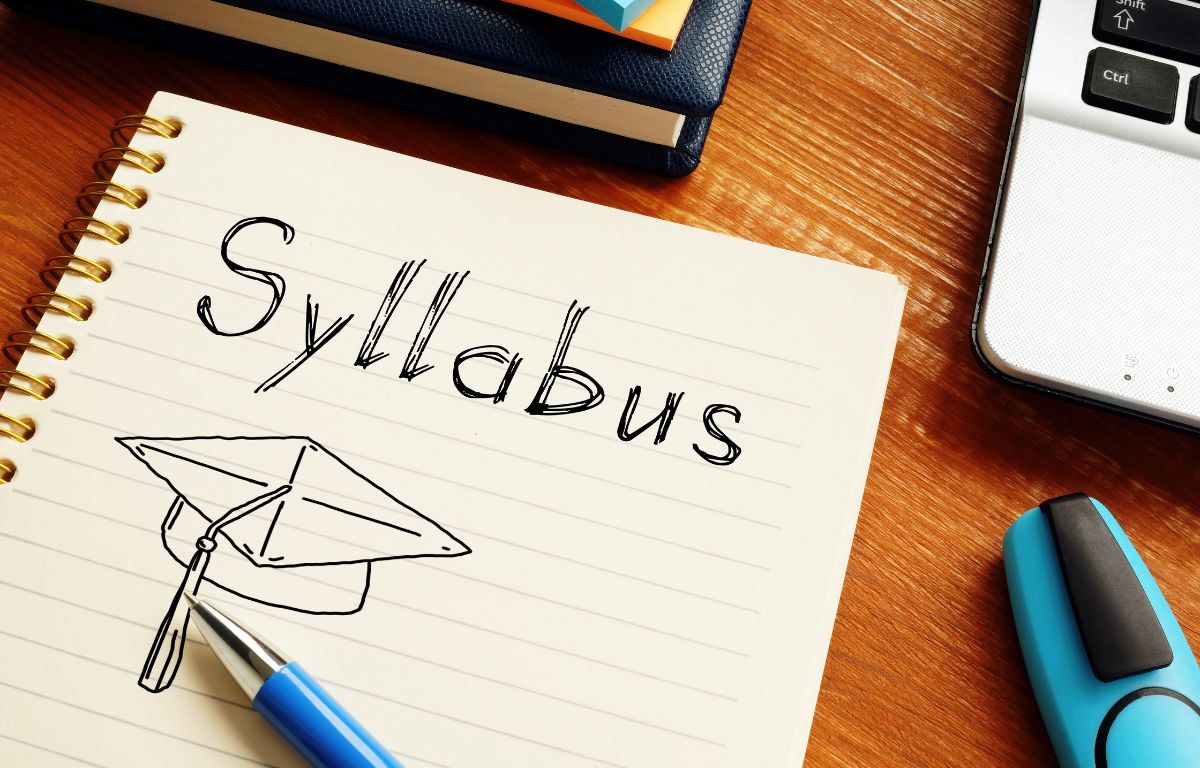
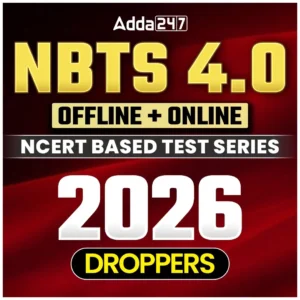








 NEET PG Scorecard 2025 Out, Check Direct...
NEET PG Scorecard 2025 Out, Check Direct...
 NEET Round 1 Seat Allotment 2025 Release...
NEET Round 1 Seat Allotment 2025 Release...
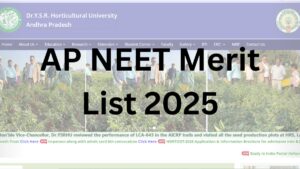 AP NEET Merit List 2025, Download State ...
AP NEET Merit List 2025, Download State ...
